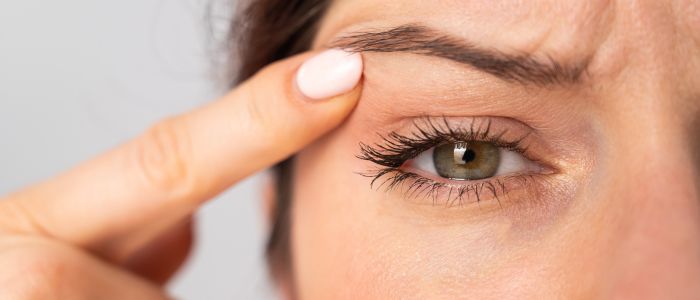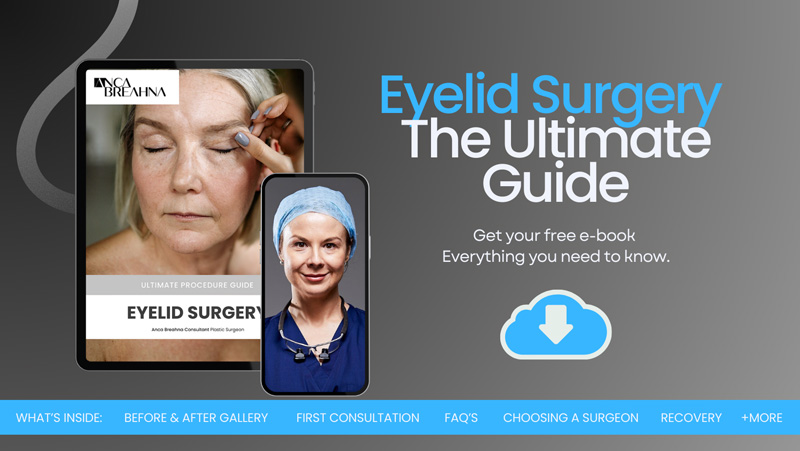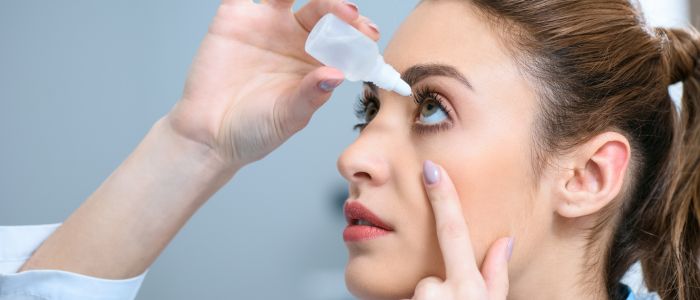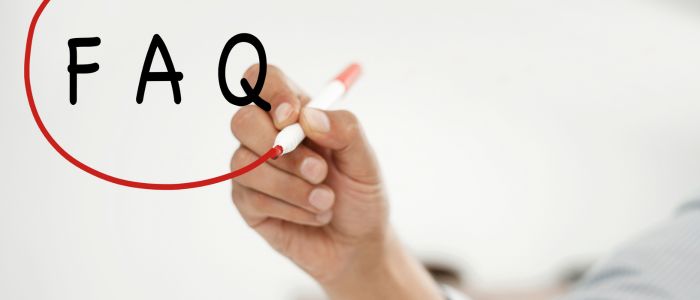
What to Expect Each Day after Upper Blepharoplasty Surgery
Getting eyelid surgery, also known as blepharoplasty, is an important decision to improve your appearance and your vision. However, the Upper Blepharoplasty recovery process is often the main focus of interest and concern. Knowing what to expect during your blepharoplasty recovery and understanding the timeline is essential for a smooth and effective healing process. While recovery experiences can differ from person to person, being aware of the general stages can help you prepare both physically and emotionally for what lies ahead.
In this blog, Consultant Plastic Surgeon Anca Breahna will provide you with a detailed blepharoplasty recovery timeline, giving insight into the day-to-day changes and milestones you can expect during your eyelid surgery recovery.
Take our Plastic Surgery Quiz to find out if you’d be a good candidate for cosmetic surgery.
Day 1
On the first day following your upper blepharoplasty, it is normal for you to experience some immediate post-operative symptoms. You may notice significant swelling and bruising around the eyes, which is a natural response of your body to the surgery. The eyelids might feel unusually tight and tender, and this can contribute to a sensation of discomfort. It’s important to understand that these are typical symptoms and generally improve within the first few days.
Immediate Post-Op Care – Cold Compresses and Rest
To alleviate the initial discomfort, swelling, and bruising, applying cold compresses is highly recommended. You should rest with your head elevated to reduce swelling—using two pillows or a recliner can be effective. It’s important to minimise activities and avoid any strenuous tasks to facilitate healing. Anca might have provided pain medication, and it is essential to follow the dosage instructions carefully to manage discomfort effectively.
Tips for Safety and Comfort
Blurred vision is a common temporary side effect on the first day after blepharoplasty. This can be due to the swelling impacting your eyelids and sometimes the ointment used during the procedure. To ensure safety and comfort during this period:
- Avoid activities that strain your eyes, such as reading, using computers, or watching television.
- Use sunglasses to shield your eyes from bright lights as they might be more sensitive post-surgery.
- Ensure that your environment is safe and free from obstacles that might cause trips or falls due to impaired vision.
- Do not drive until your vision clears and you have ceased taking any prescribed pain medications that could impair your abilities.
Day 2
On your first full day of recovery from upper blepharoplasty, you may notice an intensification in swelling and bruising. This is a normal part of the healing process, as the tissues around your eyes adjust and respond to the surgical procedure. Swelling typically reaches its peak around this time due to factors such as tissue manipulation and the body’s natural response to healing.
Continued Care – Eye Drops, Medications, and Head Elevation
Continue using the eye drops and any prescribed ointments to prevent infection and keep the eye surface moist. It’s important to follow the exact instructions provided by Anca regarding how and when to apply these medications. For pain management, avoid aspirin or ibuprofen to reduce the risk of bleeding. Instead, use the recommended pain relievers such as paracetamol or codeine-based medications if you experience discomfort.
Maintaining head elevation is vital to effectively manage swelling. Sleep with your head raised using two to three pillows or rest in a recliner to keep your head elevated. This position helps in reducing swelling and promotes faster recovery.
Restrictions and Adaptations
- Limit Physical Activity: It is advisable to avoid bending over or lifting heavy objects during the first week post-surgery. Such activities can increase blood pressure in the head area, potentially leading to complications.
- Rest and Recovery: Continue to rest and limit engagement in strenuous activities. Allow your body to heal by giving it the necessary time to recover.
- Eye Protection: Protect your eyes from light by wearing sunglasses when outdoors. This helps to reduce sensitivity as your eyes heal.
Day 3
By the third day post-upper blepharoplasty, you may start to notice a significant reduction in swelling and bruising. It’s typical for the swelling to have reached its peak around the second to third day, so seeing it begin to subside can be reassuring. You might find that the eyelids are less puffy and the bruising starts to change colour, transitioning from dark blue or purple to lighter shades like green or yellow. This colour change is a normal part of the healing process, indicating that the blood is being reabsorbed by your body.
Continuing with cold compresses can still be beneficial during this phase. Applying these intermittently—on for 10 to 15 minutes and off for the same duration—can help further reduce swelling. Remember to use a clean cloth each time to maintain hygiene.
Adhering to Wound Care and Medication Instructions
Proper wound care remains crucial on day three. You should continue to use any prescribed antibiotics as directed by Anca. It’s important to complete the full course of antibiotics, even if you start feeling better, to prevent any potential infections.
If you were prescribed eye ointments or drops, continue applying them as instructed. This helps keep the eye area lubricated and free from infection. Avoid pulling on your eyelids when applying these medications, as gentle handling is essential to avoid disturbing the healing tissues.
For any nausea or vomiting experienced, it is advisable to avoid taking anything by mouth for at least an hour, including the prescribed medications. After this period, sipping on flat coke, tea, or ginger ale can be soothing for the stomach.
Download the Eyelid Surgery Guide

Week 1: The Initial Healing Phase
During the initial healing phase, usually one week post-surgery, you may still experience some residual swelling, but it should be noticeably less than the first few days. Bruising might also persist, transitioning from darker shades to lighter tones such as yellow, indicating healing. It is common for sutures to be removed during this period, usually between the fifth and sixth day post-operation. This procedure is straightforward and performed during a follow-up visit, significantly reducing discomfort and aiding in the healing process.
Gentle Resumption of Daily Activities
By the end of the first week, you might feel ready to slowly resume some light daily activities. It’s important to avoid any tasks that could strain your eyes or cause dryness. Walking around the house is encouraged, starting with short durations and gradually increasing. However, heavy lifting and strenuous activities should still be avoided to prevent any complications or increased swelling. Adhering to these guidelines ensures a steady and safe recovery.
Weeks 2-3: Noticeable Recovery Milestones
As you transition into weeks 2 and 3 post-blepharoplasty, you may feel ready to return to work, especially if your job does not require heavy physical exertion. However, it’s important to manage expectations and modify your working conditions to support your recovery:
- Gradual Resumption: Start with shorter workdays or a reduced workload if possible. This adjustment can help you manage fatigue and monitor any increase in symptoms related to extended periods of activity.
- Work Environment Adjustments: If your role involves screen time, ensure to take frequent breaks to rest your eyes. Adjust the brightness of your computer screen to a comfortable level to avoid strain.
- Communicate with Your Employer: Be open about your recovery needs to arrange necessary accommodations, such as working from home if your presence is not mandatory at the workplace.
- Protective Measures: Continue to wear sunglasses to protect from bright lights or debris, especially if you’re returning to an outdoor or physically demanding job.
By the second and third weeks, significant improvements in comfort and physical appearance become evident:
- Reduction in Swelling and Bruising: Most of the initial swelling and bruising will have subsided, allowing the results of your surgery to become more apparent. You might notice less puffiness and a more natural eyelid contour.
- Decreased Discomfort: Any discomfort should markedly reduce by this stage. You may find it easier to engage in activities that involve visual precision without experiencing the strain or fatigue that was present in the first week.
Incorporating Light Exercise
Incorporating light exercise into your routine can be beneficial for your overall well-being and aid in your recovery:
- Suitable Exercises: Engage in low-impact activities such as walking or gentle stretching. These exercises promote blood circulation, which is essential for healing without putting undue stress on your body.
- Avoidance of High-Impact Activities: Continue to steer clear of high-impact exercises and sports that could jostle or impact the face. Activities like running, weightlifting, or contact sports should be avoided until you receive full clearance from Anca.
- Listen to Your Body: Pay close attention to how your body responds to increased activity. Any signs of discomfort or swelling should prompt a reduction in activity level and possibly a consultation with Anca.
By adhering to these guidelines, you can ensure a smooth transition through the critical weeks of recovery, setting a solid foundation for the continued healing process.
Weeks 4-5
By the fourth and fifth weeks post-upper blepharoplasty, you will likely observe more substantial improvements in the appearance of your eyelids. The majority of the swelling should have subsided, revealing the final results more clearly. It is common to notice your eyelids appearing refreshed and well-proportioned, as the delicate tissues and muscles continue to adjust to the effects of the surgery. At this stage, the natural crease of your eyelids becomes more defined, enhancing the overall aesthetic outcome.
Physical Exercise
As you progress into weeks four and five, most patients find it possible to reintroduce more strenuous activities into their daily routine. It is crucial, however, to proceed with caution and heed Anca’s advice regarding exercise. Start with low-impact exercises and gradually increase the intensity, ensuring you do not strain the healing tissues around your eyes. Activities such as light jogging or yoga can be beneficial, but it is advisable to avoid heavy lifting and high-impact sports until you have fully recovered or have been cleared by Anca.
Sun Protection and Scar Management
Continuing proper post-operative care is essential during this phase to ensure optimal healing and maintain the aesthetic results of your surgery. Protecting your eyes from direct sunlight is crucial; wearing sunglasses with UV protection and applying a broad-spectrum sunscreen can minimise the risk of scarring or pigmentation changes at the incision sites. Additionally, you may begin scar massage, if recommended by Anca, to promote a more supple and less noticeable scar. Employing gentle techniques and suitable products like silicone gel sheets can aid in managing and reducing scar visibility effectively.
FAQs about Recovery Timeline after Blepharoplasty
How soon can I return to work after blepharoplasty?
- Most patients can return to work within 7 to 10 days after surgery. This allows time for the initial swelling and bruising to subside. However, this timeline can vary depending on the individual’s healing process and the type of work they do.
What activities should I avoid during blepharoplasty recovery?
- During the first two weeks, it’s important to avoid strenuous activities, heavy lifting, and exercise. These activities can increase blood flow to the eyes and delay healing. Swimming and activities that expose your eyes to dust or smoke should also be avoided to prevent infection.
When can I start wearing makeup again?
- You can usually start wearing makeup about 10 to 14 days after surgery, once the incisions have healed sufficiently. It’s important to use new makeup products to avoid any risk of infection during the healing process.
Are there any medications I should avoid during recovery?
- Yes, you should avoid medications and supplements that can thin your blood and increase the risk of bleeding. These include aspirin, ibuprofen, vitamin E, and certain herbal supplements. Always consult with Anca for a complete list of medications to avoid.
How long will the swelling and bruising last?
- Swelling and bruising are common after blepharoplasty and can last for about two to three weeks. Most of the swelling and bruising should resolve within the first two weeks, but minor swelling may persist for a few months. Keeping your head elevated and using cold compresses can help reduce swelling faster.
Further Reading about Eyelid Surgery with Consultant Plastic Surgeon Anca Breahna
- Read more about Causes and Treatments for Eyelid Ptosis
- Read more about Recovery after Eyelid Surgery
- Read more about How to Reduce Swelling and Bruising after Blepharoplasty Surgery
- Read more about Blepharoplasty and Contact Lenses
- Read more about Causes and Treatments for Facial Wrinkles and Lines
- Read more about Cosmetic Surgery for Women in UK
- Read more about What Do Blepharoplasty Scars Look Like?
- Read more about Blepharoplasty for Seniors
- Read more about Preventing Complications in Blepharoplasty
Medical References about Blepharoplasty
- Blepharoplasty (Eyelid Surgery) – Cleveland Clinic
- Eyelid Surgery Procedure Steps – American Society of Plastic Surgeons
- Blepharoplasty (Eyelid Surgery) – WebMD
- Blepharoplasty – Mayo Clinic
- Eyelid Surgery Recovery – American Society of Plastic Surgeons


 Ms Anca Breahna, PhD, MSc, FEBOPRAS, FRCS (Plast) is a highly regarded Consultant Plastic Surgeon specialising in the field of Aesthetic and Reconstructive Plastic Surgery. Anca performs a range of
Ms Anca Breahna, PhD, MSc, FEBOPRAS, FRCS (Plast) is a highly regarded Consultant Plastic Surgeon specialising in the field of Aesthetic and Reconstructive Plastic Surgery. Anca performs a range of 